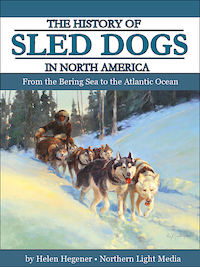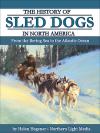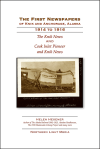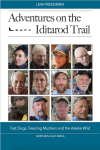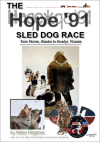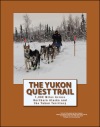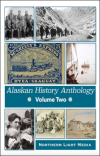
The Parks/Archer barn is a familiar landmark in the Bodenburg Loop Road area, being two Colony barns placed end-to-end. In this photo the barn on the left is the Parks barn, built on tract no. 189, and the barn on the right is the Archer barn, moved from tract no. 193. (Photos by Helen Hegener/Northern Light Media)
In 1935 the U.S. Government transported 200 families from the Great Depression-stricken midwest to a valley of unparalleled beauty in Alaska, where they were given the chance to begin new lives as part of a federally-funded social experiment, the Matanuska Colony Project. As part of each family’s farmstead, a magnificent barn was raised, a sturdy square structure 32′ by 32′ and soaring 32′ high. Today these Colony barns are an iconic reminder of what has been called the last great pioneering adventure in America.
In my book, The Matanuska Colony Barns (Northern Light Media, 2013), I shared the individual histories of many of the Colony barns. The Parks and Archer barns were built on adjoining 80 acre tracts, numbers 189 and 193, respectively. Lynn Sandvik explained to the author, “They moved the Archer barn north and put them together and did quite a bit of work on them about 20 years ago, for some kind of centennial something, but then they forgot about them again.”
In a letter to the author, Valley historian Jim Fox related a little of the Parks family history from an interview with daughter Bonita Parks Strong: “Many of the farmers in the Butte had sheep, selling their wool to Pendleton in Washington or Minnesota woolen mills, often getting blankets and winter clothes in exchange along with some cash. The Parks family had a big flock which they drove up into the mountains to the north in the summer, an 18 to 20 mile trip…”

In front of the Archer barn, the Parks barn can be seen in the distance, along with Bodenburg Butte. Glen Archer’s great grandmother Lillian Post wrote near it, “Perle Archer thinks he can handle his big bull. One day it took many to handle him.”
Glen Archer, a grandson of Colonists Perle and Dorothy Archer, wrote to the author, “My sister and I grew up listening to our father, Floyd Archer, tell stories about growing up in the Matanuska Valley and homesteading there and how his parents, Perle and Dorothy Archer, moved the family from Wisconsin to Alaska. He was only 18 months old… there were six children including my father in the family. My father still has lots of memories of life in Alaska, going to school, playing with the Colony kids, and all the hard work and long winters.”

The barn in the foreground is the Otto Peterson barn, the one in the center of the photo would be the Archer barn. The Parks barn was just out of the photo on the left side.
“About 12 years ago, I inherited from my father the old family album filled with pictures of the homestead and family in Alaska. Among the pictures is a picture of the Archer barn, more pictures of the chicken coop, farm animals, the fields, as well as the house. All of the pictures appear to have been taken by my great grandparents (Dorothy’s parents) during their trip to visit Perle, Dorothy and the six kids, in 1939, which would have been well after Perle and Dorothy were selected as part of the 200 plus families and moved to Palmer.”
In another letter to the author and friends, Glen Archer shared some of the family history after a visit with his father: “Dad said yesterday that the original house was a nice fairly large two story log house which had a full basement. It had been insulated with what he remembers as oakum, which he described as fibers saturated with a tar like substance. Somehow, two or three years after being built, his older siblings Betty and Bob one day caught the insulation on fire and the house burned to the ground. Dad said that grandpa (Perle) was very sad about the whole experience as he had really put his heart and soul into building that place and was proud of it. According to Dad, Grandpa was one of the few individuals who truly knew how to build and taught others to build. He was a general contractor for decades after they returned to the states. Grandpa also apparently started a sawmill which employed others so they could have access to milled lumber and was instrumental in building Fort Richardson.”
This post is an excerpt from the new book The Matanuska Colony Barns, by Helen Hegener, published by Northern Light Media, May 2013.
• The Matanuska Colony Barns: The Enduring Legacy of the 1935 Matanuska Colony Project, by Helen Hegener, photographs by Eric Vercammen, Stewart Amgwert, Albert Marquez, Dave Rose, Joanie Juster, Ron Day and others. Foreword by Barbara Hecker. Introduction by James H. Fox. 140 pages, full color. ISBN 978-0-9843977-4-7. Includes Colonist families listing, maps, bibliography, resources, index. List price $29.00.
Order from the publisher or from your local bookstore via IndieBound. Also available at Amazon. To order via check or money order, mail to Northern Light Media, Post Office Box 298023, Wasilla, Alaska 99629. To order from the author via credit card or Paypal, CLICK HERE and send payment to helenhegener@gmail.com


